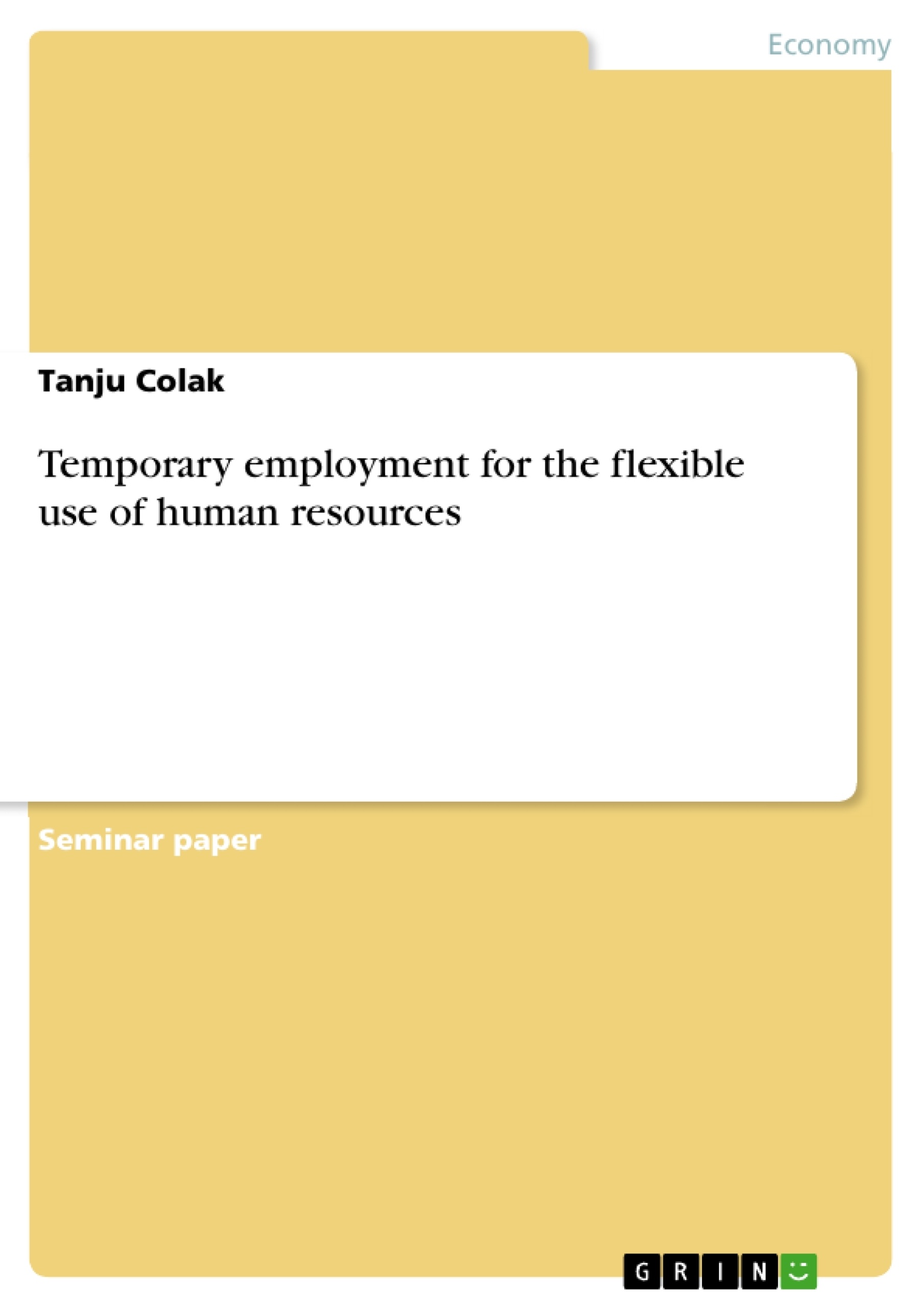No other form of employment has gained in importance in such a short period. Since 1990, temporary employment has grown enormously and has gained a larger value than before (Luo, Mann, Holden, 2010). In many companies, temporary work has become an alternative form of employment to cover additional work or personnel shortfalls. Due to this, the social image of temporary employment has increased slightly. Nowadays, companies use temporary employees as an alternative to reduce their cost and remain profitable and competitive in the market (Eisenberg, 1999). This means that many companies use temporary employees to supplement their personnel needs and as a strategy to reduce their personnel cost. Depending on the situation, temporary employment agreements can be both beneficial and harmful to companies (Kirk, Belovics, 2008).
On the other hand, temporary work has struggled against quite a negative image. Headlines, such as modern slavery, have been consolidated in connection with temporary work. This assumption highlights that temporary employment is used by companies to reduce labour costs and shift employment risks away from companies to- wards the employees. Therefore, it could be argued why temporary employees offer their manpower at the lowest possible wages without job security or career prospects.
A fundamental question that arises here is how temporary employment can be integrated into existing labour and social structures of the company in the event of durable and intensive use and what measures should be considered by companies.
According to this, the purpose of this paper is to analyse whether temporary work is a viable alternative to traditional employment. In particular, the advantages of temporary work will be discussed in association with the risks. Looking at the processes of recruitment and the integration of additional decision-making structures, such as the works council, makes it clear that the use of temporary employment requires particular requirements within the internal communication.
Inhaltsverzeichnis (Table of Contents)
- A. INTRODUCTION
- 1. PROBLEM AREA
- 2. THE AIM OF THIS PAPER
- 3. THE STRUCTURE OF THIS PAPER
- B. THEORETICAL PART
- 1. RELEVANT TERMS
- 1.1 Definition
- 1.2 From the atypical to precarious gainful employment
- 1.3 Function of the temporary employment
- 1. RELEVANT TERMS
- C. DEVELOPMENT OF THE TEMPORARY EMPLOYMENT IN GERMANY
- D. ASSOCIATED ADVANTAGES AND DISADVANTAGES
- 1. ADVANTAGES
- 2. DISADVANTAGES
- E. CONCLUSION
- F. REFERENCE LIST
Zielsetzung und Themenschwerpunkte (Objectives and Key Themes)
This paper aims to analyze whether temporary employment is a viable alternative to traditional employment, focusing on its advantages and disadvantages. The paper examines the integration of temporary employment into existing labor and social structures, considering the perspectives of both companies and employees.
- The growing importance of temporary employment in modern economies.
- The advantages and disadvantages of temporary employment for companies and employees.
- The role of temporary employment in reducing labor costs and improving flexibility.
- The impact of temporary employment on the social image of work and job security.
- The legal and ethical considerations surrounding the use of temporary employment.
Zusammenfassung der Kapitel (Chapter Summaries)
The introduction highlights the significant rise of temporary employment since 1990 and its growing role in covering additional work or personnel shortfalls. It also addresses the negative social image associated with temporary employment, including concerns about exploitation and lack of job security. The paper aims to analyze the viability of temporary employment as an alternative to traditional employment, considering its advantages and disadvantages.
The theoretical part delves into relevant terms, defining temporary employment and exploring its evolution from atypical to precarious gainful employment. It examines the function of temporary employment in providing flexibility and adaptability for companies. The chapter discusses the central problems associated with temporary employment, such as its impact on job security and social benefits.
The chapter on the development of temporary employment in Germany examines the historical context of its growth and the changing legal and social landscape. It analyzes the factors that have contributed to the rise of temporary work in Germany and the implications for both companies and workers.
The chapter on associated advantages and disadvantages examines the benefits and drawbacks of temporary employment for both companies and employees. It explores the advantages of cost reduction, flexibility, and access to specialized skills, as well as the disadvantages of potential exploitation, job insecurity, and limited career prospects.
Schlüsselwörter (Keywords)
Temporary employment, flexible work, human resources, labor market, cost reduction, job security, social image, competitive advantage, legal framework, ethical considerations, precarious employment, employment risks.
- Quote paper
- Tanju Colak (Author), 2015, Temporary employment for the flexible use of human resources, Munich, GRIN Verlag, https://www.grin.com/document/317602



